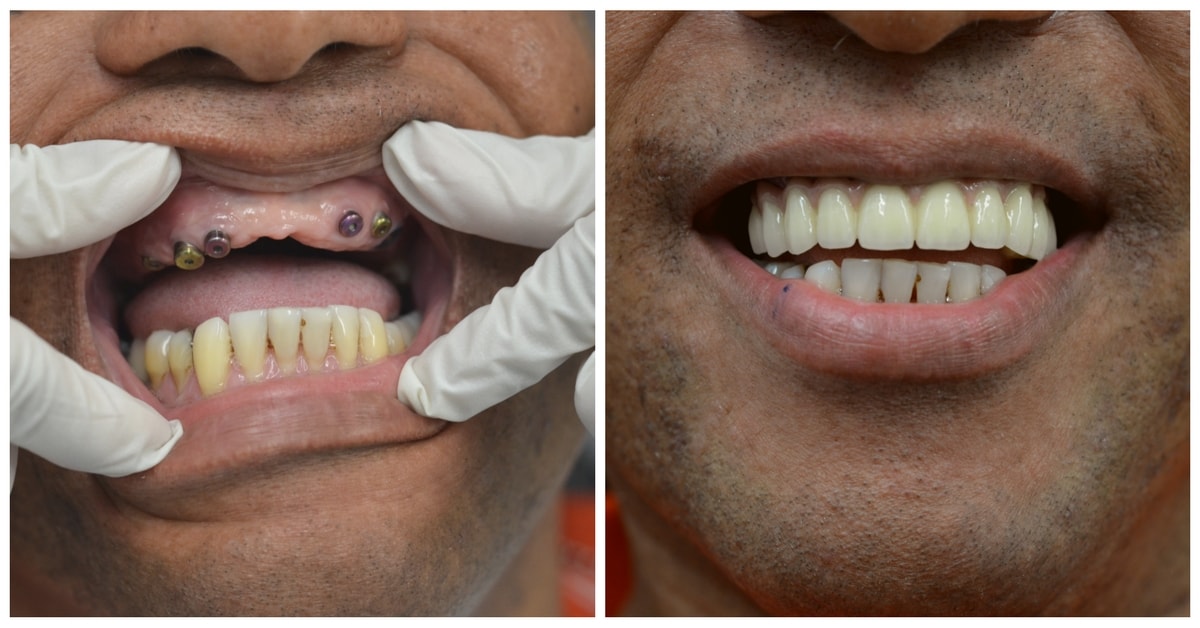The Dental Sense PDFs
The Dental Sense PDFs
Blog Article
The 6-Second Trick For Dental Sense
Table of ContentsOur Dental Sense StatementsThings about Dental SenseHow Dental Sense can Save You Time, Stress, and Money.Indicators on Dental Sense You Need To Know
are clinical tools operatively implanted right into the jaw to recover a person's capability to eat or their look. They give support for fabricated (phony) teeth, such as crowns, bridges, or dentures. When a tooth is lost due to injury or illness, a person can experience issues such as fast bone loss, malfunctioning speech, or changes to chewing patterns that result in discomfort.Dental implant systems consist of a dental implant body and oral implant joint and might likewise consist of a joint fixation screw. Dental veneers cost. The oral implant body is operatively put in the jawbone instead of the tooth's root. The dental implant joint is normally connected to the implant body by the abutment fixation screw and expands with gum tissues right into the mouth to support the attached fabricated teeth
(https://dentalsense1.creator-spring.com)Framework of The Oral Implant System choosing dental implants, talk with your oral service provider concerning the potential benefits and dangers, and whether you are a prospect for the procedure. Points to think about: Your overall wellness is an important factor in determining whether you are a great candidate for dental implants, how much time it will require to recover, and for how long the dental implant might remain in location.
Smoking cigarettes may influence the recovery procedure and decrease the long-lasting success of the dental implant. The healing procedure for the dental implant body might take several months or longer, during which time you usually have a short-term abutment instead of the tooth. the dental implant treatment: Carefully adhere to the dental health guidelines provided to you by your oral supplier.
Some Known Details About Dental Sense
Implant failure can lead to the demand for one more surgery to deal with or replace the implant system. Brings back the capacity to eat Restores cosmetic appearance Assists maintain the jawbone from shrinking due to bone loss Protects the wellness of the bordering bone and gums Aids keep nearby (neighboring) teeth secure Boosts lifestyle Damage to surrounding natural teeth during dental implant positioning Injury to the surrounding cells during surgical treatment, such as sinus opening Injury during surgery (as an example, fracture of surrounding jawbone) Inadequate feature, such as really feeling like the teeth do not attack with each other generally An experience that the tooth is loosened or turning in location resulting from an abutment screw loosening Implant body failure (looseness of the implant body) due to systemic infection, which might be most likely in patients with unchecked diabetes mellitus as a result of neighborhood infection in bone and gum tissues sustaining the implant body due to delayed healing, which might be more probable in people that smoke Problem cleaning up the gums around the implant, causing bad dental health Unattended periodontal illness Post-surgical tingling because of nerve impingement or damage Constantly alert healthcare service providers and imaging specialists that you have oral implants prior to any type of magnetic resonance imaging (MRI) or x-ray treatments.
FDA is not knowledgeable about any type of adverse occasions reported for MRI or x-ray treatments with dental implants. Oral implants systems are commonly made from materials that adhere to worldwide consensus criteria of the International Company for Standardization (ISO) or ASTM International. These requirements have information of what makes a risk-free material.

A dental implant is a structure that changes a missing out on tooth. With screw-like devices, the doctor inserts a dental implant into the jawbone, and it acts as an anchor for a fabricated tooth, called a crown.
Dental Sense - Questions
Some people are not qualified for dental implant surgical treatment. It is for dental surgeons to operate on individuals with: severe illnessuncontrollable metabolic diseasebone or soft tissue illness or infectionIf these concerns are solved, an individual can have the surgical procedure. In, oral surgeons avoid running on people with: If great post to read individuals with any one of the above undertake oral implant surgical treatment, there is a higher risk of the dental implant stopping working.

Oral dental implant surgical procedure is a customized procedure. It's not the same for everyone. The complying with gives a general summary of what you can expect your dental practitioner, oral cosmetic surgeon, periodontist or prosthodontist to do: Position the implant operatively. Provide you time to recover. Affix the blog post and last crown, bridge or denture.
Next, your surgeon will meticulously position the oral implant into your jaw. Your surgeon will rearrange your gum tissues and shut the incision with stitches. If your dental implant is near the front of your mouth, your dentist will certainly make a short-term tooth for you to put on till you heal. This way, you won't have a space in your smile while you recuperate.
More About Dental Sense
During the recovery stage, your jawbone ought to fuse to the oral implant. This procedure can take anywhere from three to nine months.
When your dental implant heals, your dental expert can affix the abutment (little adapter post) and your final repair (crown, bridge or denture). This usually takes about one hour to finish and might require a second small surgery. You shouldn't feel any pain throughout your dental implant treatment due to the fact that your supplier will certainly make use of medication to numb your gums.
Report this page